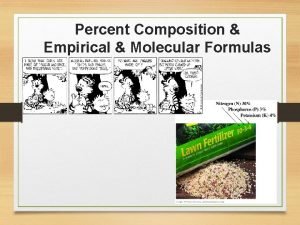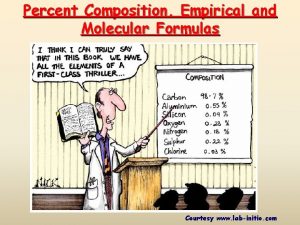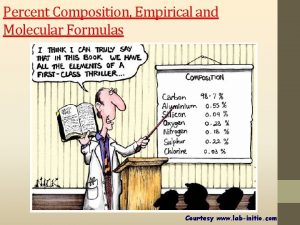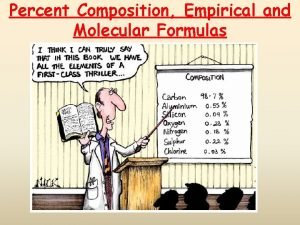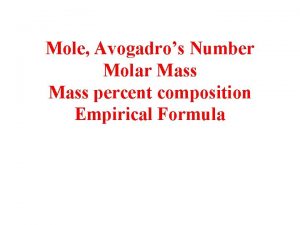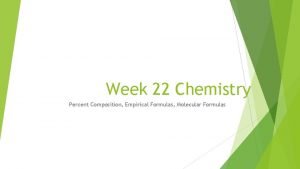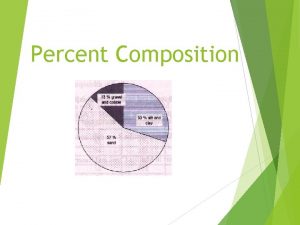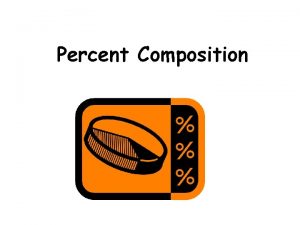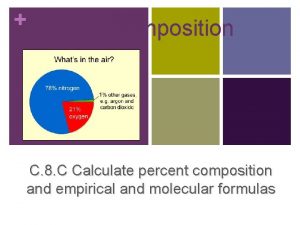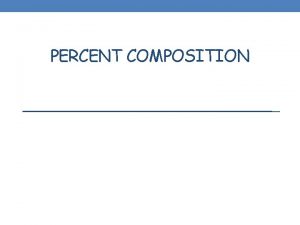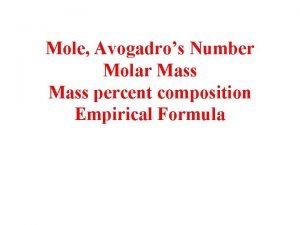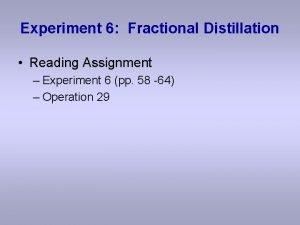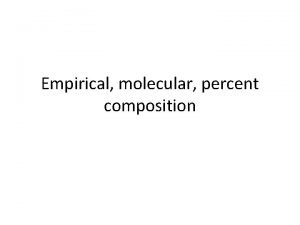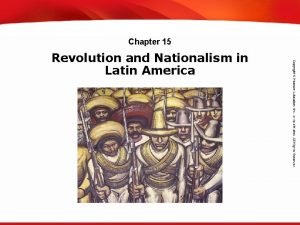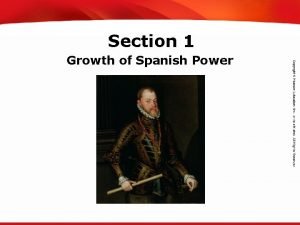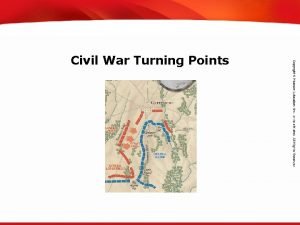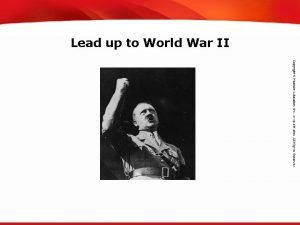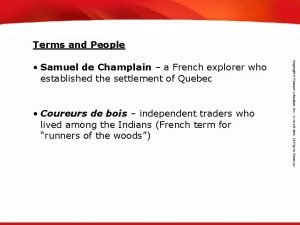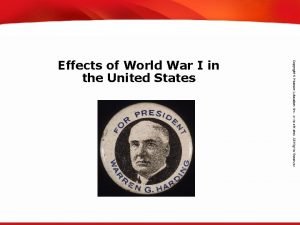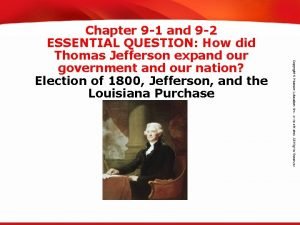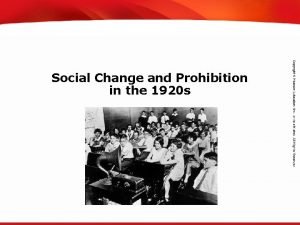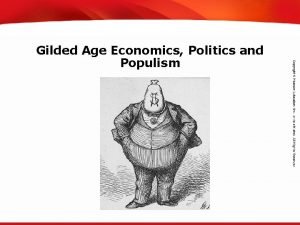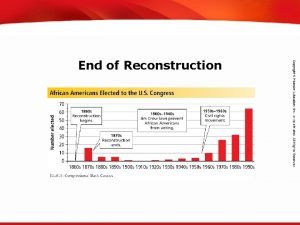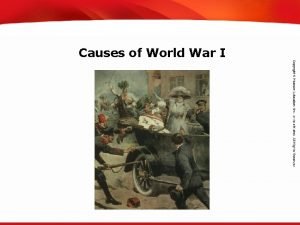TEKS 8 C Calculate percent composition and empirical





















- Slides: 21

TEKS 8 C: Calculate percent composition and empirical and molecular formulas. Civil Rights in the 1960 s

TEKS 8 C: Calculate percent composition and empirical and molecular formulas. Objectives • Explore Martin Luther King’s use of nonviolent protest to gain equal rights. • Find out how new federal legislation helped protect civil rights. • Understand why the civil rights movement broke up into several groups. • Analyze the achievements and failures of the civil rights movement.

TEKS 8 C: Calculate percent composition and empirical and molecular formulas. Terms and People • civil disobedience – the peaceful refusal to obey unjust laws • sit-in – a form of protest in which people sit and refuse to leave • James Meredith – African American student admitted to the University of Mississippi after a federal court order • Malcolm X – a militant African American leader who initially called for a separation from white society before rejecting separatism in favor of cooperation between the races

TEKS 8 C: Calculate percent composition and empirical and molecular formulas. Terms and People (continued) • Stokely Carmichael – a militant African American leader who developed a movement called “black power” • ghetto – a poor, run-down neighborhood • affirmative action – a program under which businesses and schools are encouraged to give preference to members of groups that have been discriminated against in the past

TEKS 8 C: Calculate percent composition and empirical and molecular formulas. How did the civil rights movement gain momentum? Dr. Martin Luther King, Jr. , led protests based on a firm belief in nonviolence, while other leaders turned to more militant methods. Congress passed the Civil Rights Act of 1964 and the Voting Rights Act of 1965.

TEKS 8 C: Calculate percent composition and empirical and molecular formulas. Dr. Martin Luther King, Jr. , had emerged as a dynamic civil rights leader during the Montgomery bus boycott. The boycott had provided the first test of King’s belief in civil disobedience.

TEKS 8 C: Calculate percent composition and empirical and molecular formulas. Sources of King’s Ideas Christian Teachings • King was a Baptist minister, and he told his followers that, as Jesus did, they should always meet hate with love. Henry David Thoreau • Thoreau believed that people must disobey unjust laws if their consciences demand it. Mohandas Gandhi • Gandhi led a campaign to win India’s freedom from British colonial rule. • Gandhi taught that one should resist injustice, even if it meant going to jail or enduring violence. A. Philip Randolph • Randolph was a prominent African American labor leader who championed a strategy of nonviolent mass protest.

TEKS 8 C: Calculate percent composition and empirical and molecular formulas. In 1957, King joined with other African American church leaders to found the Southern Christian Leadership Conference (SCLC). The SCLC’s goal was full equality for African Americans. It would accomplish its goal through nonviolent civil disobedience. Most early civil rights activity had been dominated by northerners, but now African American churches in the South took the lead.

TEKS 8 C: Calculate percent composition and empirical and molecular formulas. Nonviolent Protest Spreads Sit-ins • In 1960, four African American students sat at a “whites only” lunch counter in North Carolina. • They refused to move until they were served. Freedom Riding • In 1961, thirteen Freedom Riders—seven black, six white—successfully integrated several bus stations before being violently attacked in Alabama. Attending School • In 1962, a federal court ordered the University of Mississippi to admit James Meredith. • Riots broke out when Meredith arrived on campus, but they were quelled by federal troops.

TEKS 8 C: Calculate percent composition and empirical and molecular formulas. Violence increased in 1963, when police attacked thousands of peaceful protesters in Birmingham, Alabama. Americans were horrified. Under pressure, city authorities desegregated public facilities and hired African Americans.

TEKS 8 C: Calculate percent composition and empirical and molecular formulas. After the events in Birmingham, President Kennedy sent Congress a strong civil rights bill. To focus attention on the bill, civil rights leaders held the March on Washington on August 28, 1963. Nearly 250, 000 people came, and King inspired many with his “I Have a Dream” speech.

TEKS 8 C: Calculate percent composition and empirical and molecular formulas. Kennedy was assassinated before he could get his civil rights bill passed. But President Lyndon Johnson pushed Congress until it passed a civil rights bill. The Civil Rights Acts of 1964: • banned discrimination in public facilities based on race, color, religion, sex, or national origin • outlawed discrimination in employment based on the same factors • provided for faster school desegregation • further protected voting rights

TEKS 8 C: Calculate percent composition and empirical and molecular formulas. Still, African Americans in the South struggled to vote. In 1964, volunteers went to Mississippi to register African American voters. Three volunteers were murdered. There were beatings, shootings, and church bombings.

TEKS 8 C: Calculate percent composition and empirical and molecular formulas. The violence continued in Alabama. In March 1965, hundreds of people marched from Selma to Montgomery. State troopers drove them back into Selma using tear gas and clubs. People in more than 80 cities protested the violence and demanded a voting rights act.

TEKS 8 C: Calculate percent composition and empirical and molecular formulas. That summer, Congress passed the Voting Rights Act of 1965, which: • banned literacy tests and other barriers to voting • allowed federal officials to register voters directly

TEKS 8 C: Calculate percent composition and empirical and molecular formulas. Some African Americans grew impatient and turned to more militant leaders. One of the best known of these leaders was Malcolm X chose “X” as his last name to represent his lost African name.

TEKS 8 C: Calculate percent composition and empirical and molecular formulas. Malcolm X did not believe integration would solve African Americans’ struggles. Later, Malcolm X rejected separatism and supported an “honest white-black brotherhood. ” He urged African Americans to separate from white society. Before he could fully develop these new ideas, he was assassinated.

TEKS 8 C: Calculate percent composition and empirical and molecular formulas. Stokely Carmichael and others grew impatient with nonviolent protests. They urged African Americans to fight back if attacked. They began the movement called “black power. ” African Americans should take pride in their own heritage. African Americans should be economically independent.

TEKS 8 C: Calculate percent composition and empirical and molecular formulas. The civil rights movement had done little to ease the hardships of the millions of African Americans living in ghettos in northern cities. In the mid-1960 s, riots sparked by racial tensions broke out in dozens of cities.

TEKS 8 C: Calculate percent composition and empirical and molecular formulas. With King’s death in 1968, a major era of the civil rights movement came to an end. Nonetheless, many gains had been made. Legal Rights Representation Affirmative Action • Ended legal segregation • Increased number of African American elected officials • Allowed thousands of African Americans to attend college • Added the first African American to the Supreme Court • Encouraged African Americans to enter professions such as law and medicine • Opened education and voting rights

TEKS 8 C: Calculate percent composition and empirical and molecular formulas.
 Empirical formula from percent composition
Empirical formula from percent composition Which pair of species have same percentage of carbon
Which pair of species have same percentage of carbon Calculating percentage composition by mass
Calculating percentage composition by mass How to find empirical formula from percentages
How to find empirical formula from percentages Courtesy formulas
Courtesy formulas Adipic acid empirical formula
Adipic acid empirical formula Empirical formula from percent composition
Empirical formula from percent composition Percentage formula
Percentage formula Percentage composition of propane
Percentage composition of propane Moles of water
Moles of water Percent composition examples
Percent composition examples How to calculate valid percent
How to calculate valid percent Percent composition of m&m lab
Percent composition of m&m lab Part whole percent
Part whole percent Percent composition definition
Percent composition definition Mass percent formula
Mass percent formula Percent composition
Percent composition Percent composition by mass
Percent composition by mass How to find empirical formula from percentages
How to find empirical formula from percentages Percent composition gas chromatography
Percent composition gas chromatography Empirical and molecular formulas worksheet
Empirical and molecular formulas worksheet Molar mass of compounds
Molar mass of compounds

